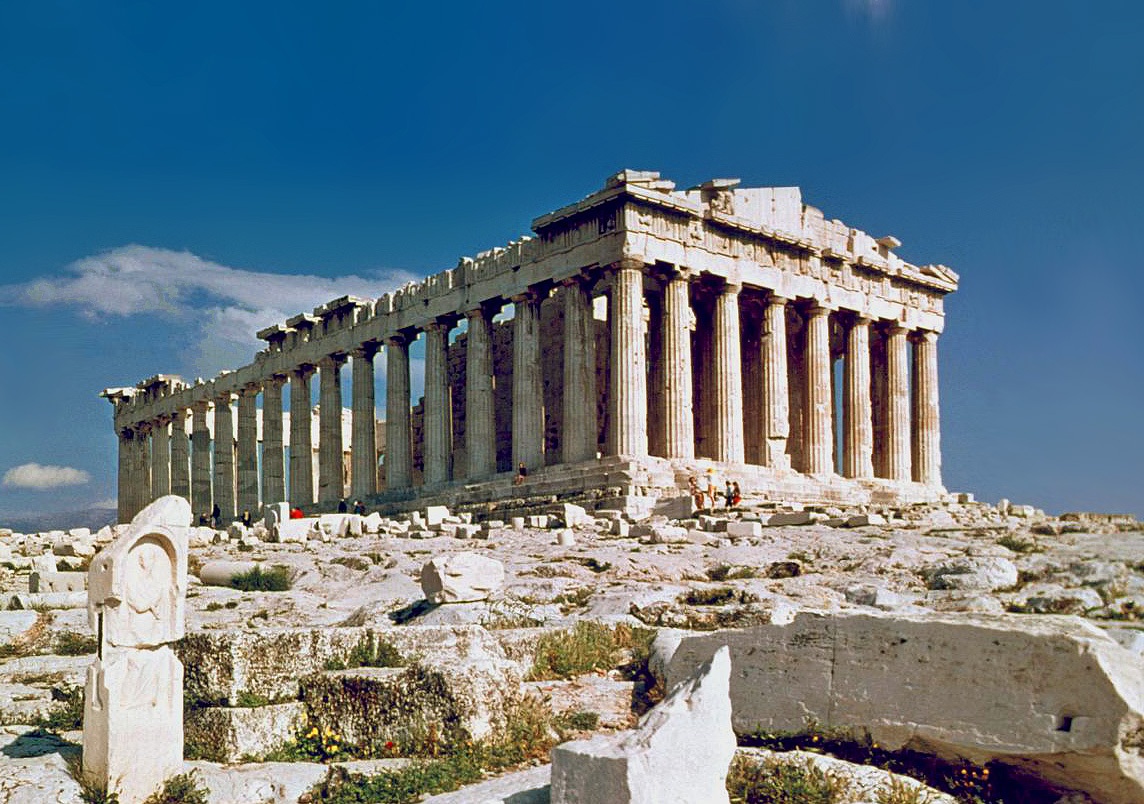|
Discordianism
Discordianism is a belief system based around Eris, the Greek goddess of strife and discord, and variously defined as a religion, new religious movement, virtual religion, or act of social commentary; though prior to 2005, some sources categorized it as a parody religion. It was founded after the 1963 publication of its holy book, ''Principia Discordia'', written by Greg Hill with Kerry Wendell Thornley, the two working under the pseudonyms Malaclypse the Younger and Omar Khayyam Ravenhurst. David Chidester considers Discordianism to be the first virtual religion and the first to take up the challenge of establishing its religious authenticity. When the Yahoo search engine categorized Discordianism as a parody religion, in May 2001 Discordians started an email campaign to get the religion reclassified. It is difficult to estimate the number of Discordians because they are not required to hold Discordianism as their only belief system. According to Arthur Versluis, Discordianism ... [...More Info...] [...Related Items...] OR: [Wikipedia] [Google] [Baidu] [Amazon] |
Principia Discordia
The ''Principia Discordia'' is the first published Discordianism, Discordian religious text. It was written by Greg Hill (Malaclypse the Younger) with Kerry Wendell Thornley (Lord Omar Khayyam Ravenhurst) and others. The first edition was printed using Jim Garrison's Xerox printer in 1963. The second edition was published under the title ''Principia Discordia or How The West Was Lost'' in a limited edition of five copies in 1965. The phrase ''Principia Discordia'', reminiscent of Isaac Newton's 1687 ''Philosophiæ Naturalis Principia Mathematica, Principia Mathematica'', is presumably intended to mean ''Discordant Principles'', or ''Principles of Discordance''. The ''Principia'' describes the Discordian Society and its Goddess Eris (mythology), Eris, as well as the basics of the POEE religious denomination, denomination of Discordianism. It features typewritten and handwritten text intermixed with clip art, stamps, and seals appropriated from other sources. It is quoted extensively ... [...More Info...] [...Related Items...] OR: [Wikipedia] [Google] [Baidu] [Amazon] |
Virtual Religion
Religions are represented on the Internet in many ways. There are sites which attempt to cover all religions, traditions, and faiths, such as Patheos (which also provides a forum for atheism and Humanism), Religious Tolerance, and Beliefnet. There are also sites that are specific to a religious tradition. Many sites are discussion groups, others host theological debates, and some provide advice concerning religious doctrine. Some sites aim to provide a religious experience facilitating prayer, meditation, or virtual pilgrimages. People also leverage search engines to investigate aspects of religion. Some religious websites are translated into several languages. For example, JW.ORG features content in over 1,000 languages. Christianity There have been a number of attempts to create online Christian communities, usually supplementing, but occasionally attempting to replace, more traditional, brick and mortar Christian communities. It is common for even moderate sized Christian ... [...More Info...] [...Related Items...] OR: [Wikipedia] [Google] [Baidu] [Amazon] |
Zenarchy
Kerry Wendell Thornley (April 17, 1938 – November 28, 1998) was an American author. He is known as the co-founder (along with childhood friend Greg Hill) of Discordianism, in which context he is usually known as Omar Khayyam Ravenhurst or simply Lord Omar. He and Hill authored the religion's text ''Principia Discordia, Or, How I Found Goddess, and What I Did to Her When I Found Her.'' Thornley also was known for his 1962 manuscript ''The Idle Warriors'', which was inspired by the activities of his acquaintance Lee Harvey Oswald before the 1963 assassination of John F. Kennedy. Thornley was highly active in the countercultural publishing scene, writing for a number of underground magazines and newspapers, and self-publishing many one-page (or ''broadsheet'') newsletters of his own. One such newsletter called ''Zenarchy'' was published in the 1960s under the pen name Ho Chi Zen. Zenarchy is described in the introduction of the collected volume as "the social order which sprin ... [...More Info...] [...Related Items...] OR: [Wikipedia] [Google] [Baidu] [Amazon] |
Parody Religion
A parody religion or mock religion is a belief system that challenges the spiritual convictions of others, often through humor, satire, or burlesque (literary ridicule). Often constructed to achieve a specific purpose related to another belief system, a parody religion can be a parody of several religions, sects, gurus, cults, or new religious movements at the same time, or even a parody of no particular religion – instead parodying the concept of religious belief itself. Some parody religions emphasise having fun; the new faith may serve as a convenient excuse for pleasant social interaction among the like-minded. One approach of parody religions aims to highlight deficiencies in particular pro-religious arguments – following the logic that if a given argument can also be used to support a clear parody, then the original argument is clearly flawed. This can be done through fictional religions found in many works of fiction - one example of this can be the Bokononism from th ... [...More Info...] [...Related Items...] OR: [Wikipedia] [Google] [Baidu] [Amazon] |
Eris (mythology)
In Greek mythology, Eris () is the goddess and personification of strife and discord, particularly in war, and in the ''Iliad'' (where she is the "sister" of Ares the god of war). According to Hesiod she was the daughter of primordial Nyx (Night), and the mother of a long list of undesirable personified abstractions, such as Ponos (Toil), Limos (Famine), Algea (Pains) and Ate (Delusion). Eris initiated a quarrel between Hera, Athena and Aphrodite, which led to the Judgement of Paris and ultimately the Trojan War. Eris's Roman equivalent is Discordia. According to Hesiod, there was another Eris, separate and distinct from Eris the daughter of Nyx, who was beneficial to men. Etymology The name derives from the noun ''eris'', with stem ''erid-'', which means "strife, discord" and is of uncertain etymology; connections with the verb "to raise, stir, excite" and the proper name have been suggested. R. S. P. Beekes sees no strong evidence for this relation and excludes th ... [...More Info...] [...Related Items...] OR: [Wikipedia] [Google] [Baidu] [Amazon] |
Malaclypse The Younger
Gregory Hill (May 21, 1941July 20, 2000), better known by the pen name Malaclypse the Younger, was an American author. He is listed as author of the ''Principia Discordia'', which was written with Kerry Wendell Thornley (a.k.a. Lord Omar Khayyam Ravenhurst) and others. He was also adapted as a character in '' The Illuminatus! Trilogy'' (1975). During the early years of circulation of the ''Principia Discordia'', rumors claimed that the author of the book was Richard Nixon, Timothy Leary, or Robert Anton Wilson; or that the book and Malaclypse the Younger were both fictional inventions of Robert Anton Wilson, as with Abdul Alhazred's '' Necronomicon''. Biography Gregory H. Hill was born in California on Wednesday, May 21, 1941. He worked for Western Union while a young man in the Southern California area of Whittier, California. Around 1958 or 1959 while still a teenager, he, Kerry Thornley and others began working on the Discordian religion. In 1965, the first edition of '' ... [...More Info...] [...Related Items...] OR: [Wikipedia] [Google] [Baidu] [Amazon] |
Neopaganism
Modern paganism, also known as contemporary paganism and neopaganism, spans a range of new religious movements variously influenced by the Paganism, beliefs of pre-modern peoples across Europe, North Africa, and the Near East. Despite some common similarities, contemporary pagan movements are diverse, sharing no single set of beliefs, practices, or religious texts. Religious studies, Scholars of religion may study the phenomenon as a movement divided into different religions, while others study neopaganism as a decentralized religion with an array of Religious denomination, denominations. Adherents rely on Christianization, pre-Christian, folkloric, and ethnographic sources to a variety of degrees; many of them follow a spirituality that they accept as entirely modern, while others claim to adhere to Prehistoric religion, prehistoric beliefs, or else, they attempt to revive indigenous religions as accurately as possible. List of modern pagan movements, Modern pagan movements are ... [...More Info...] [...Related Items...] OR: [Wikipedia] [Google] [Baidu] [Amazon] |
Emperor Norton
Joshua Abraham Norton (February 4, 1818 – January 8, 1880) was a resident of San Francisco, California, who in 1859 declared himself "Emperor of these United States" in a proclamation that he signed "Norton I., Emperor of the United States". Commonly known as Emperor Norton, he took the secondary title "Protector of Mexico" in 1866. Born in England and raised in South Africa, Norton left Cape Town in late 1845, sailing from Liverpool to Boston in early 1846 and eventually arriving in San Francisco in late 1849. After a brief period of prosperity, Norton made a business gambit in late 1852 that played out poorly, ultimately forcing him to declare bankruptcy in 1856. Norton proclaimed himself "Emperor of these United States" in September 1859, a role he played for the rest of his life. Norton had no formal political power but was treated deferentially in San Francisco and elsewhere in California, and currency issued in his name was honored in some of the establishments he fr ... [...More Info...] [...Related Items...] OR: [Wikipedia] [Google] [Baidu] [Amazon] |
Counterculture Of The 1960s
The counterculture of the 1960s was an anti-establishment cultural phenomenon and political movement that developed in the Western world during the mid-20th century. It began in the early 1960s, and continued through the early 1970s. It is often synonymous with cultural liberalism and with the various social changes of the decade. The effects of the movement"iarchive:cubanc 000104, Where Have All the Rebels Gone?" Ep. 125 of ''Assignment America''. Buffalo, NY: WNET. 1975.Transcript availablevia American Archive of Public Broadcasting.) have been ongoing to the present day. The aggregate movement gained momentum as the civil rights movement in the United States had made significant progress, such as the Voting Rights Act of 1965, and with the intensification of the Vietnam War that same year, it became revolutionary to some. As the movement progressed, widespread social tensions also developed concerning other issues, and tended to flow along generational lines regarding Individu ... [...More Info...] [...Related Items...] OR: [Wikipedia] [Google] [Baidu] [Amazon] |
Religion
Religion is a range of social system, social-cultural systems, including designated religious behaviour, behaviors and practices, morals, beliefs, worldviews, religious text, texts, sanctified places, prophecies, ethics in religion, ethics, or religious organization, organizations, that generally relate humanity to supernatural, transcendence (religion), transcendental, and spirituality, spiritual elements—although there is no scholarly consensus over what precisely constitutes a religion. It is an essentially contested concept. Different religions may or may not contain various elements ranging from the divine, sacredness, faith,Tillich, P. (1957) ''Dynamics of faith''. Harper Perennial; (p. 1). and a supernatural being or beings. The origin of religious belief is an open question, with possible explanations including awareness of individual death, a sense of community, and dreams. Religions have sacred histories, narratives, and mythologies, preserved in oral traditions, sac ... [...More Info...] [...Related Items...] OR: [Wikipedia] [Google] [Baidu] [Amazon] |





